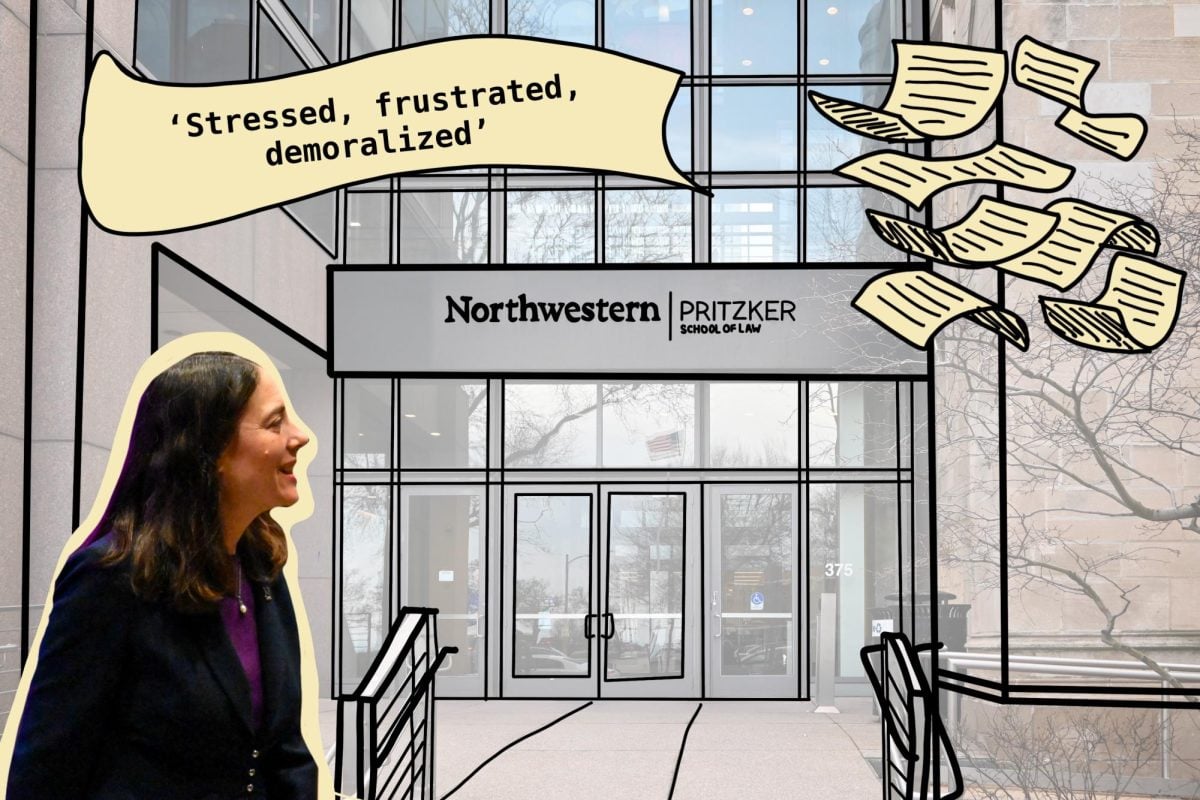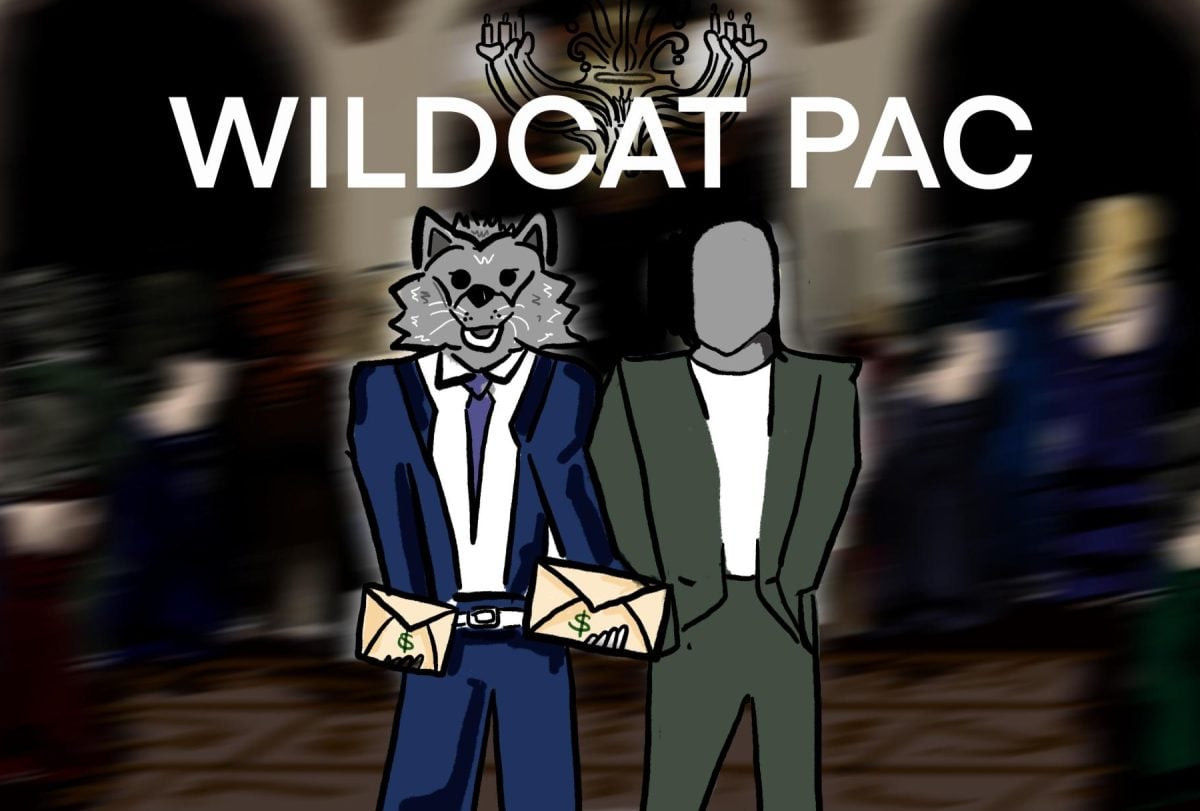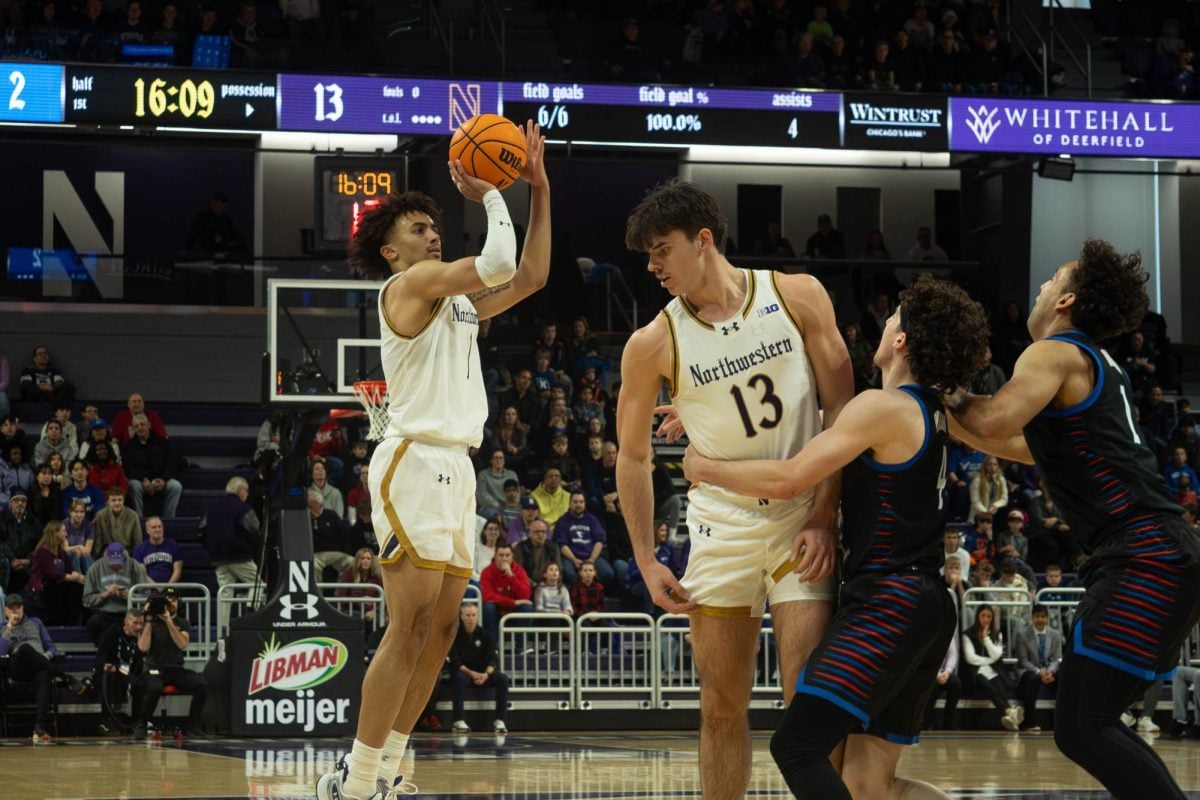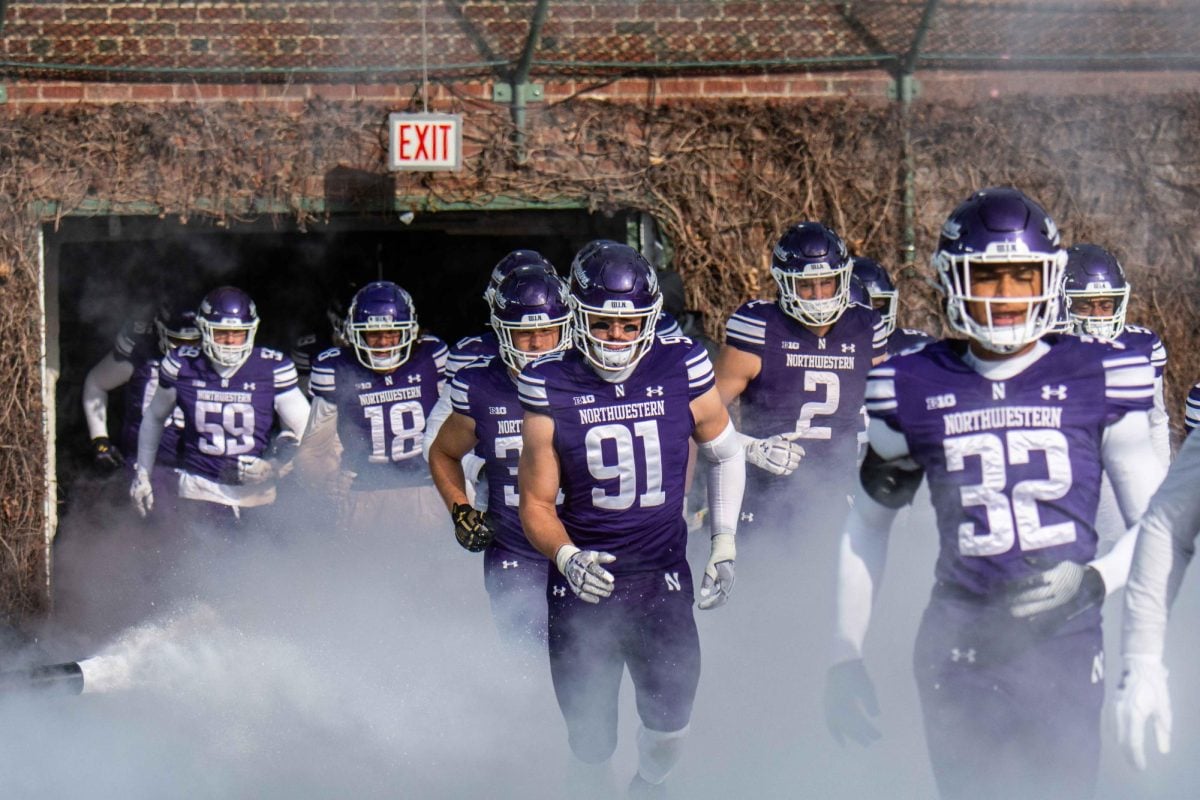On the last day of summer, Northwestern’s class of 2016 lounged on Deering Meadow during the first annual Deering Days Welcome BBQ.
To freshmen, it may have just seemed like a relaxing end to Wildcat Welcome, with rapper Chet Haze performing and plenty of free food. But the barbecue held a deeper significance as NU’s first-ever “zero waste” event.
Students at the barbecue disposed of their waste at composting and recycling stations, and water filling stations cut down on plastic bottle usage. In all, the event generated about 500 pounds of compostable material and only 3 or 4 pounds of waste, said Weinberg junior Ani Ajith, a main organizer of the event.
In many ways, the Wildcat Welcome finale signified an increasingly motivated sustainability movement: Deering Days was fueled largely by student initiative but augmented by support from food service provider Sodexo, Associated Student Government, NU Student Affairs and the new Office of Sustainability.
Still, it is difficult to gauge the effectiveness of NU’s sustainability movement, which has been characterized by disjointed initiatives and ineffective communication with the broader student body. In the year since its creation, the Office of Sustainability has worked to improve collaboration between the administration, ASG and student groups hoping to create a greener NU. Regardless, many not directly involved in the push remain uninformed about the University’s environmental efforts.
A holistic approach, fragmented
“Sustainability is very broad,” nuCuisine sustainability intern Paige Humecki said. “There’s a lot of different meanings to the word and different components of being sustainable.”
At a university like NU, that broad definition can be applied unevenly. NuCuisine’s sustainability efforts encompass energy and waste reduction as well as locally sourced foods, the McCormick sophomore said. Other NU departments have focused on things such as green energy and building sustainability certification, whereas sustainability minded student groups target everything from green engineering to environmental advocacy to recycling.
Until recently, many of NU’s sustainability initiatives have been concentrated at the administrative level. The University currently invests about $30 million in energy-saving projects across its two campuses, said Rob Whittier, who became NU’s first sustainability director when the office opened last November.
By purchasing renewable energy certificates at local wind farms, ensuring Leadership in Energy and Environmental Design certification for construction projects and installing solar panels on the Ford Motor Company Engineering Design Center, NU has become a top green energy user.
However, with more than a dozen environmental organizations and initiatives across campus, NU’s proliferation of sustainability-related organizations can be overwhelming. The movement has been characterized by poor overall direction and administrative engagement, Whittier said.
Communication begets cohesion
When University President Morton Schapiro arrived in 2009, students almost immediately approached him to request a sustainability coordinator, said Burgwell Howard, assistant vice president of student engagement.
The University granted that request last year because “you have to have someone who can dedicate 100 percent of their time to these issues,” Howard said.
“It’s infusing this as part of the campus culture, so that it is not just Green Cup for a month in the winter,” Howard said, referring to the annual competition that pits different dorms, residential colleges and Greek houses against each other in an effort to use the least amount of energy.
Since Whittier’s arrival, the Office of Sustainability has promoted that mindset by acting as a central resource for NU’s environmental organizations.
Taking charge of the Sustainability Working Action Group, a biweekly meeting of environmental leaders, the office is encouraging more interaction between NU’s “disparate” groups, said Julie Cahillane, NU’s manager of recycling and refuse and a creator of the group.
Still, a year out from its founding, the coordination efforts of the sustainability office have not trickled down to students not involved in green initiatives.
“I don’t think they emphasize (sustainability) a lot, no,” said Weinberg sophomore Neha Govindraj. “The first step I think they do a good job of implementing, but they don’t take it further.”
Whittier admits the University has fallen flat with regards to community education and engagement.
“There’s the stuff that we can do as the University around buying wind energy and energy efficiency, but just as important is how we engage the students, faculty and staff on this campus around sustainability initiatives,” Whittier said. “And we haven’t done a great job of that.”
Similar goals, different approaches
Last May, students from the Real Food Coalition amassed a petition of more than 1,100 signatures demanding that NU join the Real Food Challenge and obtain “20 percent real food by 2020.”
The national program defines “real food” as being locally sourced, organically grown, and fairly and humanely produced and uses a “real food calculator” to quantitatively track the percentage of real food at universities.
Steve Mangan, district manager for nuCuisine, said although nuCuisine representatives have engaged in conversations with the Real Food Coalition, NU has not committed to the program — in part because of sustainability initiatives that were already underway.
Dining halls began composting leftover food last May, and the University already has established relationships with more than 100 local farms in the Midwest, Mangan said.
Since May 2011, Humecki has been cataloging food procurement to assess the percentage of real food at NU. But some food vendors do not always have information readily available, she said.
“The problem is bigger than us here at nuCuisine,” Humecki said. “We all wish that we could just flip the switch and dismantle this giant food complex we have going on, but we can’t.”
Mangan estimated NU’s percentage of real food to fluctuate seasonally between 15 and 20 percent, close to the Real Food Challenge’s goal of 20 percent.
“The Real Food Coalition has goals that align with us, but those of us that have to make it happen understand the challenge of that,” Mangan said.
However, Real Food Coalition member Will Bloom said the group will continue to push administrators this year to commit to the challenge.
“If we spend all our time looking for reasons for why this is going to be hard, that’s actually admitting that we don’t want to do it,” the Weinberg senior said.
Administrative efforts to bring coherence to NU’s sustainability movement have been matched by ASG, which established its Sustainability Committee last spring.
Mark Silberg, associate vice president for the ASG sustainability committee, said ASG would like to bring together NU’s varied environmental organizations, which “rarely look outside of their group for help.”
“I see the ASG sustainability committee as both uniting the environmental movement among undergraduates and leveraging all these common interests for the benefit of the greater campus community,” the Weinberg junior said.
Educating, engaging the community
This month the Office of Sustainability will roll out sustainNU, an educational campaign that “soft launched” in September when all freshmen received reusable sustainNU water bottles as a part of Wildcat Welcome.
Electronically distributed to all students, the “Green Living Guide” outlines eight major ways students can reduce their impact on the environment. Additionally, students can take the “Green Pledge,” an online commitment to sustainability at NU.
The office will also enhance Eco-Reps, a program that appoints an environmental “champion” in every residence hall and Greek house to communicate sustainable practices to residents. This is the first year the sustainability office will be involved with the program.
“It was kind of disappointing last year,” said former eco-rep Chi Chi Onuigbo, a McCormick sophomore. “I was really excited to get the position, and then I found out that no one really pays attention to it, no one really expects anything.”
Arming eco-reps with a handbook and formal training, the Office of Sustainability hopes to provide them with more administrative support, said Allison Potteiger, sustainability and communications outreach intern for the Office of Sustainability.
More formal education efforts include a new undergraduate certificate in energy and sustainability, offered for the first time this fall. The seven-unit certificate could potentially develop into a full sustainability major in the future, said Brad Sageman, director of education and special projects for ISEN.
Sustainability ‘socially, environmentally and economically’
To continue encouraging student-led sustainability projects, the Office of Sustainability and the ASG Sustainability Committee hope to revive the Northwestern Sustainability Fund.
Initiated in 2008 by NU alumnus Anthony Valente (Weinberg ’11) and three other students, the fund secured enough money through fundraising and NU’s board of trustees to install automatic faucets in Norris University Center and the solar panels on Ford, amassing about $130,000 to finance the projects.
Since then, the fund has fallen into disuse, but both Whittier and Silberg are working to bring it back by the end of the academic year. Student groups would be able to submit project proposals to the fund, which would be overseen by ASG.
Whittier said he would like to install water bottle filling stations across campus to encourage the use of reusable water bottles.
Silberg said reintroducing the fund would allow student groups to initiate capital-intensive environmental projects to benefit the university environmentally and financially.
“The estimated cost savings from these energy efficiency upgrades would go back into the fund, so that it’s self-sustaining,” Silberg said. “It’s sustainability socially, environmentally, and economically — which is exactly what we kind of want.”
As NU’s varied environmental projects develop across campus this year, administrators and student groups will have to continue to work together to achieve more tangible results.
“Previously it’s been very difficult to actually do things in a sustainable way, do a coordinated effort with the University,” Humecki said. “But now that we’re all coming together and we have a variety of channels where we can connect with everyone, we’re going to see a lot more positive change, a lot more unified efforts.”













